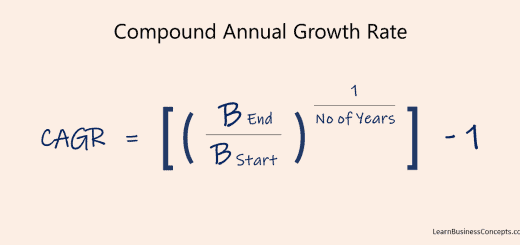Perfect Competition: Overview, Definition, & Features
Overview of Perfect Competition
Perfect competition occurs when there are many sellers in the market, with very low entry barriers, and products are matched from one seller to another. In a perfect competition market, all companies sell identical products and any company cannot determine prices.
A firm in a perfectly competitive market is a price taker. It means that the firm must accept the equilibrium price in the market with competition. The firm will be unable to sustain itself in a perfectly competitive market if it tries to charge even a tiny amount more than the market price.
Buyers have perfect information (with regards to the past, present, and future) about the product being sold and the prices charged by each corporation.
Perfect competition is theoretically the opposite of a monopoly market.
Definition of Perfect Competition
Perfect competition describes a market structure where competition is at the highest level. This market has a large number of producers, high competition, identical products, and less market power for a single firm.
Perfect competition is a hypothetical situation in which it is not practically available. Perfect competition is used as a base to compare with other forms of market structure.
Features of Perfect Competition
1. Homogenous (Non Differentiated) Products Produced By Firms
In a perfect competition market, all producers produce similar products. These products are identical or non-differentiated. This is known as ‘homogenous’ in economic terms.
More simply, customers can buy the product from one producer or another, which serves the same purpose that it is. There is no uniqueness inherited from the products produced by one producer which brings more value.
2. Entry and Exit Barriers are Low
Perfectly competitive industries allow firms to easily enter and exit the industry. New firms can easily enter the market. There are no major difficulties to enter the industry in terms of cost, regulation, patents, etc.
3. Customers Have Perfect Information About Products
Consumers are well aware of the market changes and have perfect knowledge. This simply means that customers know what producers sell the lowest price of the substitutable products.
Customers can switch from one supplier to another easily when they have the perfect information.
4. High Competition
There are many buyers and sellers available in a perfectly competitive market. This makes the perfect competition market structure as high competitive. There are many choices available for the consumers, and also producers have to compete more with the reveries.
Each producer can not raise prices as they wish. If they do so, they will be out of the market because customers will switch to cheaper substitutable products easily.
Apart from the above, there are some other features of a perfect competition market like Market Power for Individual Firm, Number of Producers, Possibility of Super Economic Profits, Super Economic Profits, Substantial Market Share of Individual Firm, etc. Read the below article to find out the full list of the features of a perfect competition market.
Examples of Perfect Competition Market
1. Crops in the United States
Corn, wheat, soybeans, cotton, and hay are the major crops produced in the United States. These individual products are very similar. If we take wheat, it is a similar product produced by every American wheat farmer. As these products are non-differentiated, it is easy to buy land and start farming. This means low barriers to entry are there. But there is a high competition due to this. None of the farmers can be a price maker.
2. Pulp & Paper Manufacturing in Canada
The Paper Mills industry in Canada is a $6bn growing market. There are many companies in the industry including Cariboo, Kruger, Winpak, Supremex, and Hood Packaging. These manufacturers produce paper pulp and convert pulp into paper. These companies produce products like paper rolls and reams as the final output.
Since there are many producers in the industry which produce identical products, any firm can not raise and control the prices on their own. The pulp and paper production industry is an example of perfect competition.
3. Foreign Exchange Market in World
People exchange money from one currency to another using a foreign exchange shop. The product is non-differentiated (homogeneous) due to the same currency types applicable on every exchange (US Dollar, Great British Pound, Euro, Australian Dollar, etc..). There are many sellers and buyers in the market. One shop can not manipulate the exchange rate and earn supernormal profits due to the competition.
Apart from the above, there are many real-world industry examples of perfect competition like Sugarcane Production in Australia, Dairy Products in America, Barley Harvest in Canada, etc. Read the below article to find out the full list of real-world examples of a perfect competition market.
Long-Run Equilibrium in a Perfectly Competitive Market
Long-run equilibrium in perfectly competitive markets results in two kinds of efficiencies. This happens when profit-maximizing firms in perfectly competitive markets combine with utility-maximizing consumers. These two efficiencies (conditions) depend on the resource allocation for their best alternative and the maximum satisfaction of the society.
- Allocative Efficiency
- Productive Efficiency
1. Allocative Efficiency in Perfect Competition
Allocative efficiency means when it is chosen is a socially preferred condition. Price is equal to the marginal cost of production in a perfectly competitive market.
When perfectly competitive firms follow the rule that profits are maximized by producing at the quantity where the price is equal to marginal cost, they are thus ensuring that the social benefits received from producing a good are in line with the social costs of production.
2. Productive Efficiency in Perfect Competition
Productive efficiency means producing without waste. In the long run in a perfectly competitive market, because of the process of entry and exit, the price in the market is equal to the minimum of the long-run average cost curve. In other words, goods are being produced and sold at the lowest possible average cost.
Read More:
Market Structures
Perfect Competition
- Overview, Definition, & Features of Perfect Competition
- Main Characteristics / Causes of Perfect Competition
- Real Examples of Perfect Competition (in USA, Canada, Australia, World)
- Advantages and Disadvantages of Perfect Competition
Monopolistic Competition
- Overview, Definition, & Features of Monopolistic Competition
- Main Characteristics / Causes of Monopolistic Competition
- Real Examples of Monopolistic Competition (in USA, Canada, World)
- Advantages and Disadvantages of Monopolistic Competition
Oligopoly Market
- Real Examples of Oligopoly Market (in the USA, Canada, World)
- Seven Important Characteristics of Oligopoly Market
- Advantages and Disadvantages of Oligopoly Market
Monopoly Market
- Definition, Examples, and Characteristics of Monopoly Market
- Real Examples of Monopoly Market (in the USA, Canada, Australia, World)
- Important Characteristics / Causes of Monopoly Market
- Advantages and Disadvantages of Monopoly Market


